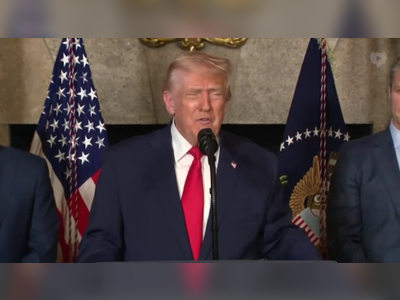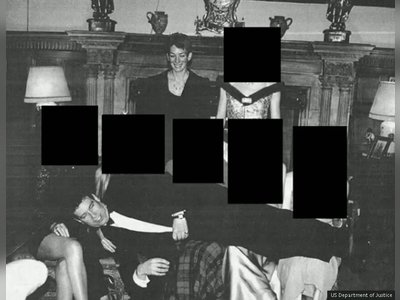
Johns Hopkins published then deleted an article questioning the U.S. coronavirus death rate
The university stands by the study but said the article was leading to the spread of 'misinformation'
Last week, Johns Hopkins University published a now-deleted article explaining a study examining the effects of the novel coronavirus on United States death totals using data from the Centers for Disease Control and Prevention.
Genevieve Briand, the assistant program director of the Applied Economics master's degree program at Johns Hopkins, determined, in the study, that there have been 1.7 million deaths in the U.S. between March 2020 and September 2020, 12% (or roughly 200,000) of which have been coronavirus-related.
Briand posits that the only way to understand the significance of the U.S. coronavirus death rate is by comparing it to the number of total deaths in the country.
According to Briand, who compared the total deaths per age category from both before and after the onset of the global pandemic, the death rate of older people stayed the same before and after coronavirus.
"The reason we have a higher number of reported COVID-19 deaths among older individuals than younger individuals is simply because every day in the U.S. older individuals die in higher numbers than younger individuals," wrote Briand.
She also noted that between 50,000 and 70,000 deaths are seen both before and after the emergence of the virus, meaning that, according to her analysis, coronavirus has had no effect on the percentage of total deaths of older people, nor has it increased the total number of deaths in the category.
These results contradict the way most people see the impact of the coronavirus pandemic, which disproportionately affects the elderly population.
Briand believes, after reviewing the numbers, that coronavirus deaths are being over-exaggerated. After seeing that in 2020, coronavirus-related deaths exceeded deaths from heart disease -- the leading cause of death in the U.S. for many years prior -- Briand began to suspect that the coronavirus death toll figure may be misleading.
Briand found that "the total decrease in deaths by other causes almost exactly equals the increase in deaths by COVID-19," according to the original JHU newsletter.
"If [the COVID-19 death toll] was not misleading at all, what we should have observed is an increased number of heart attacks and increased COVID-19 numbers. But a decreased number of heart attacks and all the other death causes doesn't give us a choice but to point to some misclassification," said Briand.
"If [the COVID-19 death toll] was not misleading at all, what we should have observed is an increased number of heart attacks and increased COVID-19 numbers. But a decreased number of heart attacks and all the other death causes doesn't give us a choice but to point to some misclassification," said Briand.
"All of this points to no evidence that COVID-19 created any excess deaths. Total death numbers are not above normal death numbers. We found no evidence to the contrary," she continued.
Several days after removing the article, Johns Hopkins University tweeted that the article, "A closer look at U.S. deaths to COVID-19," was deleted because "the article was being used to support false and dangerous inaccuracies about the impact of the pandemic."
"We regret that this article may have contributed to the spread of misinformation about COVID-19," tweeted the institution.
Genevieve Briand, the assistant program director of the Applied Economics master's degree program at Johns Hopkins, determined, in the study, that there have been 1.7 million deaths in the U.S. between March 2020 and September 2020, 12% (or roughly 200,000) of which have been coronavirus-related.
Briand posits that the only way to understand the significance of the U.S. coronavirus death rate is by comparing it to the number of total deaths in the country.
According to Briand, who compared the total deaths per age category from both before and after the onset of the global pandemic, the death rate of older people stayed the same before and after coronavirus.
"The reason we have a higher number of reported COVID-19 deaths among older individuals than younger individuals is simply because every day in the U.S. older individuals die in higher numbers than younger individuals," wrote Briand.
She also noted that between 50,000 and 70,000 deaths are seen both before and after the emergence of the virus, meaning that, according to her analysis, coronavirus has had no effect on the percentage of total deaths of older people, nor has it increased the total number of deaths in the category.
These results contradict the way most people see the impact of the coronavirus pandemic, which disproportionately affects the elderly population.
Briand believes, after reviewing the numbers, that coronavirus deaths are being over-exaggerated. After seeing that in 2020, coronavirus-related deaths exceeded deaths from heart disease -- the leading cause of death in the U.S. for many years prior -- Briand began to suspect that the coronavirus death toll figure may be misleading.
Briand found that "the total decrease in deaths by other causes almost exactly equals the increase in deaths by COVID-19," according to the original JHU newsletter.
"If [the COVID-19 death toll] was not misleading at all, what we should have observed is an increased number of heart attacks and increased COVID-19 numbers. But a decreased number of heart attacks and all the other death causes doesn't give us a choice but to point to some misclassification," said Briand.
"If [the COVID-19 death toll] was not misleading at all, what we should have observed is an increased number of heart attacks and increased COVID-19 numbers. But a decreased number of heart attacks and all the other death causes doesn't give us a choice but to point to some misclassification," said Briand.
"All of this points to no evidence that COVID-19 created any excess deaths. Total death numbers are not above normal death numbers. We found no evidence to the contrary," she continued.
Several days after removing the article, Johns Hopkins University tweeted that the article, "A closer look at U.S. deaths to COVID-19," was deleted because "the article was being used to support false and dangerous inaccuracies about the impact of the pandemic."
"We regret that this article may have contributed to the spread of misinformation about COVID-19," tweeted the institution.
Comments

pierre Leon 5 year ago
Is it a new way to get more attention ?

Ronald 5 year ago
Covid 19 is an anti-Trump political disease. Unlike the closely related common cold, one must take an expensive medical test even to know one has it.

Tomas 5 year ago
What happened to the seasonal flu patients that overwhelmed hospitals and nursing homes every year?

Pierluigi 5 year ago
Please, confute the conclusion of the retired paper using DATA.
Otherwhise I will call this plain censorship, rightly so.
Otherwhise I will call this plain censorship, rightly so.

Chip 5 year ago
Dr Eliza, I also am a scientist and as such deal with facts not emotion. The "second wave" is not overwhelming facilities and the "convention centers" were not needed nor used except in a few select, high density cities which protected the vulnerable very poorly in the first wave. I found nothing in her paper that disputes the facts of the death rates. I also believe the public needs to understand that "flattening the curve" does not eliminate the virus (everyone will be exposed), only extends the time that people are exposed and the longer we will have to deal with this. In addition, nobody understands the long term effect of the vaccine(s), nor the ability of the virus to mutate (e.g. influenza). The financial toll on the US will be no less than $10 trillion. Assuming 500,000 people die this year (death toll at 260,000 now), that equates to $20 million for every death. This is an extraordinary burden on current and future generations. This does not take into account the psychological and health impacts of people out of work, nor the lack of education for our children that is taking a severe toll on the US. This will not be the last virus or pandemic we will have to deal with. Our approach was just plain wrong. We need to have a plan to protect the vulnerable in the future and let everyone else live their normal lives so we do not bankrupt this country and negatively impact future generations.

Richard 5 year ago
According to: (https://www.macrotrends.net/countries/USA/united-states/death-rate), which cites United Nations data, the death rate in the US has been climbing incrementally for most of the past several years, though for 2020 it hasn't changed significantly from 2019. Based on these facts it would appear that Briand's conclusions are sound and the CDC data is suspect. On a side note, the ad hominem attack on Briand was unprofessional.

Maxwell 5 year ago
Dr. Or not i suspect you are part of the problem not the solution. Ever hear of the asian flu of 57.
The almost 250,000 deaths back then actually died of the flu. Not flu/strep throat. Or not flu/stroke. This is the biggest travesty to be foistered on the American people ever. It appears you are part of the destruction of America.
The almost 250,000 deaths back then actually died of the flu. Not flu/strep throat. Or not flu/stroke. This is the biggest travesty to be foistered on the American people ever. It appears you are part of the destruction of America.

Eliza 5 year ago
I am a physician and scientist at John Hopkins. This mention in a student newsletter was picked up by conspiracy theorist who think their civil rights are being violated, and they disseminated and glorified it. It’s an unfortunate embarrassment for her and the university. The data she chose to analyze, and conclusions she made are laughable. People can believe her confused conclusions about death rates. But maybe they should consider real issues like the overwhelmed hospitals, especially ICUs all over the country; the need to transform convention centers into hospital wards; the need for mobile morgues. Are these familiar issues from before COVID-19?

Maxwell 5 year ago
Looks like they should have flunked Paula. She doesn't seem to realize there is a difference between dying with covid or dying of covid. Our local hospital has every diagnoses as having covid. e.g. covid/strep throat. That is a real diagnosis. Until the financial reward to the medical profession for covid diagnosis ends this will never end. Obviously she knows nothing about statistical analysis either!!!

Kat 5 year ago
Hi Paula,
Dr. Briand does not understand the issue, you say, but you do. Please, elaborate. Thank you!
Dr. Briand does not understand the issue, you say, but you do. Please, elaborate. Thank you!











